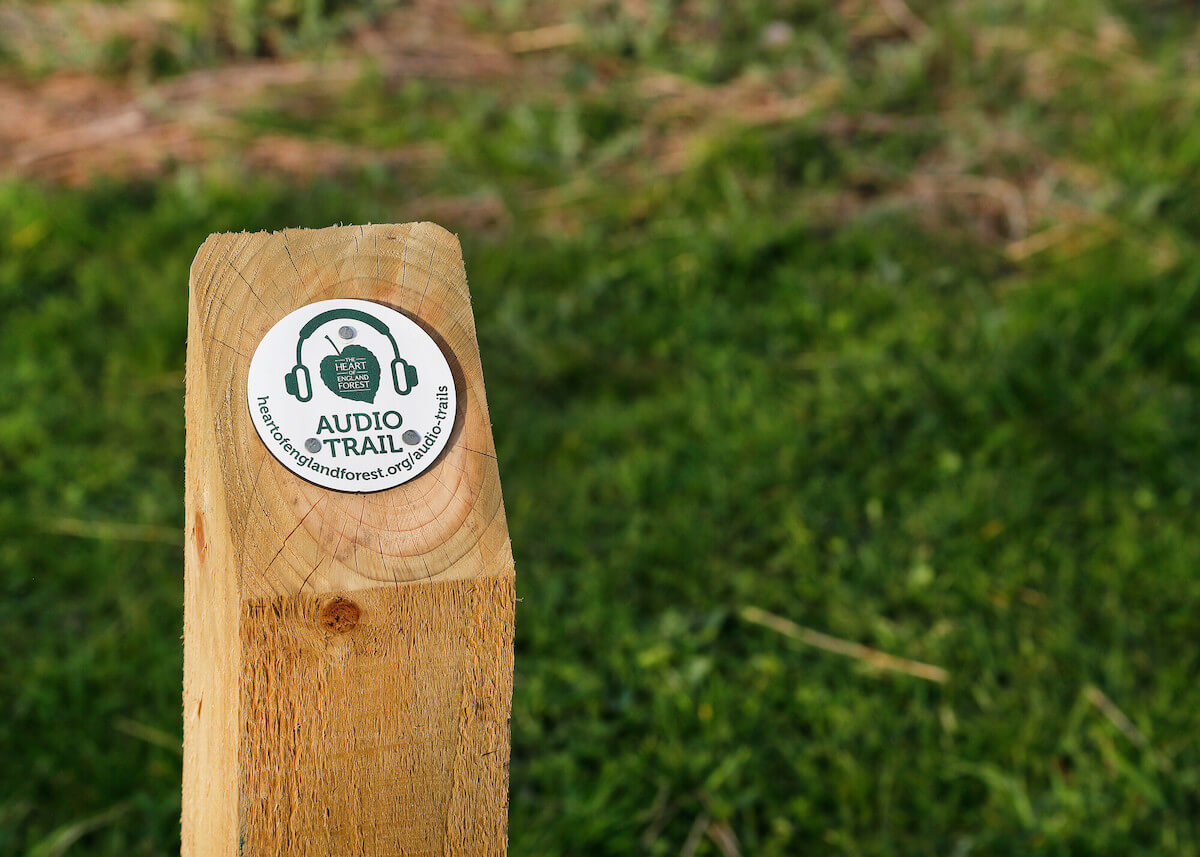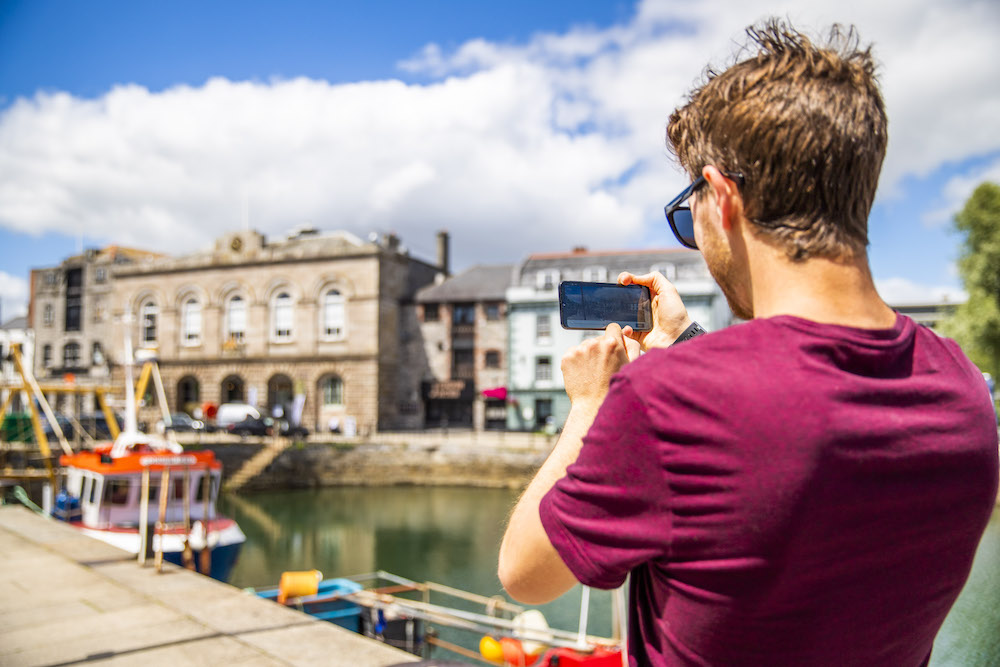
This featured article from Dr Philip Ryland (and published by the Association for Heritage Interpretation) briefly explored the wants and desires of visitors who have participated in self-guided trails, in a variety of natural as well as heritage settings. Self-guided trails are the very backbone of our Places and Trails app platform. We always welcome the opportunity to share learned research and assist the creation of engaging trails that wow visitors and want them to return again and again.
“I loved feeling completely lost in glorious countryside.”
Whilst this feeling may not be what most visitors wish, self-guided trails do provide a brilliant opportunity for visitors to explore a location in a safe, yet managed way, via a trail leading them though a sequence of stops.
Trails are widely offered across natural and heritage sites. Traditionally, they were associated with a leaflet or booklet and waymarked signs, panels and posts; today many are linked to mobile phone and app technology. Following a self-guided trail can inform and inspire, but also challenge the visitor, allowing them to make direct connections with the site and what they can see around them. Beyond that, trails can create new experiences, stimulate special moments and create meaningful memories.

This piece of research undertaken by Philip Ryland asked visitors at a range of natural sites the question: ‘What do you want from a self-guided trail?’ Fifty groups of visitors were approached, of these:
- none were visiting on their own
- 21 were with a partner (42%)
- 29 were with family and/or friends (58%)
These groups were asked if this was their first visit to the site. For the vast majority (76%) it was.
In exploring the style of self-guided trail which they had most recently undertaken, the following information emerged:
- Trail Format: Paper 36%, Audio 64%
- Length: Under 1 hr 76%, Over 1 hr 24%
- Confidence waymarkers: Yes 56%, No 44%
- Family Trail: Yes 64%, No 36%
Trapp, Gross & Zimmerman (1994) suggest there are three principal elements in the design of a self-guided trail, namely: creating mystery, variety and beauty.

Mystery, variety and beauty
Mystery provokes visitor curiosity, whilst variety provides contrast and diversity. Beauty, they suggest focuses on the spectacle of the landscape; its colours, textures but also timeliness quality. But what did the visitors say about their experience? In terms of their views of the purpose and features of a self-guided trail, nine main themes emerged, which are summarised below.
What do you want from a self-guided trail? Main themes identified (ranked in order)
- Provide scenic view points – 86%
- Provide places to see wildlife congregating – 82%
- Provide places to stop, rest and relax – 76%
- Ensure the trail is well signed with waymarkers – 68%
- Provide informative and memorable information – 58%
- Provide opportunities to undertake activities – 58%
- Make direct connections with the site’s history and wildlife – 48%
- Create some form of mystery and/or surprise – 42%
- Provide opportunities to make choices on the route – 30%
So, what do these results suggest about the design of a self-guided trail?
- ‘Making direct connections’, ‘Seeing wildlife’ and ‘Providing memorable information’ proved to be important features. The information provided on a trail should of course be relevant to your audience but most importantly it should capture their attention, provoke questions and encourage active engagement with the site, its landscape and wildlife. Memorable information about the site can be enhanced through effectively layered messages delivered in a logical sequence and tightly focused around an overall theme. The making of connections is nicely illustrated by a respondent who described part of their experience as: ‘We stopped at the lake and were encouraged to look around for any birds, it was such a special moment when Ben spotted a heron’ (Respondent 21, 2022).
- ‘Provide opportunities to undertake activities’ also proved to be a popular response. Asking questions and provoking discussion within and even between visitor groups can be highly effective. Many trails also incorporate various forms of scavenger-type hunt to encourage interaction and a more dynamic experience. Sniff or touch boxes are also popular. Ham (1992) suggests that the design of each station should focus upon ‘look-listen – compare’ as a way of encouraging visitors to engage directly with the site, and ask themselves the question: ‘What do you feel about it?’ A good example of interaction came from Respondent 12 (2022) who said: ‘We had never hugged a tree before – and its smell was amazing!’
- ‘Use mystery or surprise to enhance the experience’. A simple technique is to ensure stops cannot be viewed from one another and where possible natural features are used to obscure the view along the trail. Try and create a situation where visitor curiosity over ‘what comes next’ is maintained throughout the trail. Curves in the route can also be used to achieve the same effect, although this approach can sometimes fail, as Respondent 5 (2022) said: ‘The trail was quite curvy so we just cut across it, in some places.’
- The value of carefully designed messages at each stop is also critical. It is important that the messages focus on observable features, avoid unfamiliar or complex language and encourage active visitor involvement. The development of a thematic map for the whole trail can help to ensure that each station’s messages link directly to the overall theme and where layering of information is used, this is sequenced correctly. Respondent 41 (2022) said: ‘The geology was quite complicated, but I think we sort of got it, by the end of the trail.’
In conclusion, Philip defers to Ham (1992) who, in discussing the development of a successful thematic map for a trail, suggested that the designer should follow the mantra: ‘focus – explain – connect’, which is nicely encapsulated by the comment from Respondent 28 (2002), who said: ‘We knew little about the site when we arrived, but the trail was amazing, we shall certainly now be coming back again.’
Further reading
Trapp, S., Gross, M. and Zimmerman, R. 1994. Signs, Trails, and Wayside Exhibits: Connecting People and Places. Stevens Point, WI; University of Wisconsin-Stevens Point Foundation Press Inc.
Ham, S.H. 1992. Environmental interpretation: a practical guide for people with big ideas and small budgets. Golden, CO: North American Press.
Sharpe, G.W. 1976. Interpreting the environment. New York: John Wiley & Sons Inc.
With thanks to Dr Philip Ryland, MAHI, for agreeing for us to republish this article. Philip teaches tourism and is also Associate Dean (Student Experience) in the Faculty of Management, Bournemouth University.
A version of this article first appeared in the Association of Heritage Interpretation (AHI) Journal in Summer 2023. The images did not appear in the article.
What next?
Now you know what a self-guided trail should include, you just need the app platform to make it a reality. Read more about our Places and Trails platform.
Otherwise, get in touch to discuss your project.